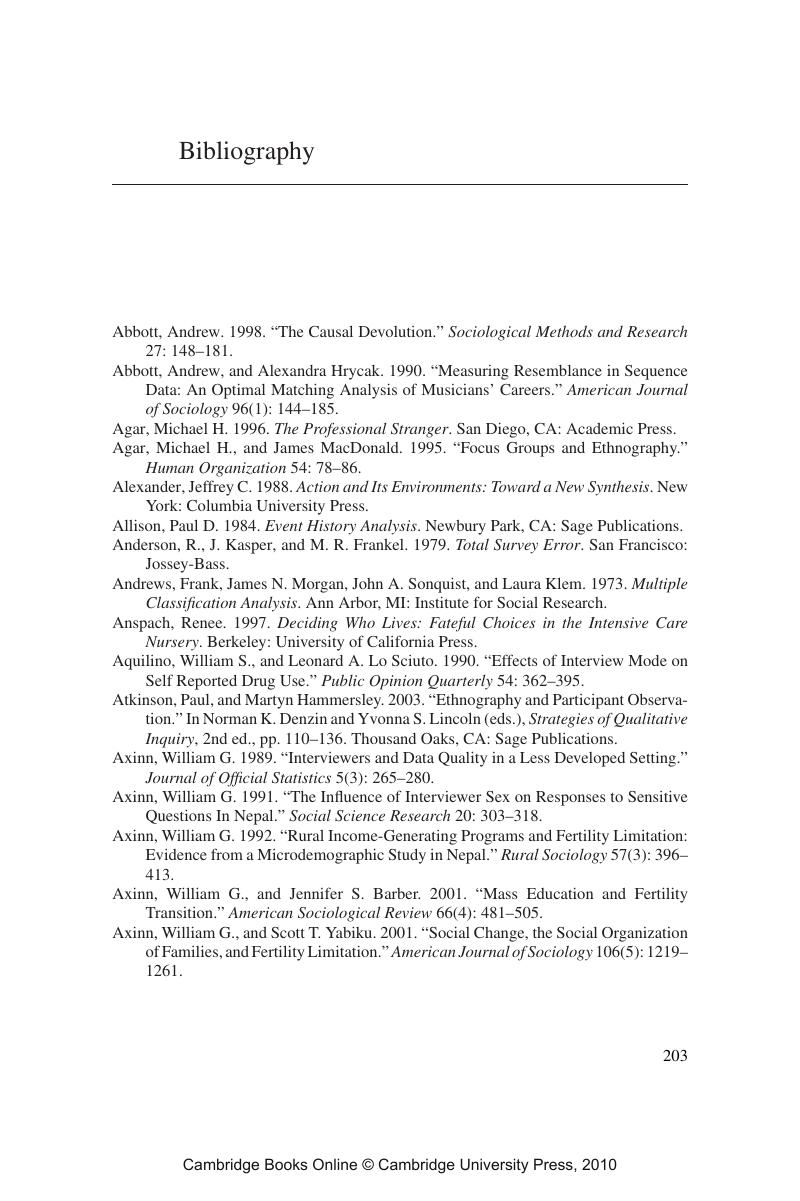Book contents
- Frontmatter
- Contents
- Acknowledgments
- Preface
- 1 Motivations for Mixed Method Social Research
- 2 Fitting Data Collection Methods to Research Aims
- 3 The Micro-Demographic Community Study Approach
- 4 Systematic Anomalous Case Analysis
- 5 Neighborhood History Calendars
- 6 Life History Calendars
- 7 Longitudinal Data Collection
- 8 Conclusion
- Notes
- Bibliography
- Index
- References
Bibliography
Published online by Cambridge University Press: 10 December 2009
- Frontmatter
- Contents
- Acknowledgments
- Preface
- 1 Motivations for Mixed Method Social Research
- 2 Fitting Data Collection Methods to Research Aims
- 3 The Micro-Demographic Community Study Approach
- 4 Systematic Anomalous Case Analysis
- 5 Neighborhood History Calendars
- 6 Life History Calendars
- 7 Longitudinal Data Collection
- 8 Conclusion
- Notes
- Bibliography
- Index
- References
Summary

- Type
- Chapter
- Information
- Mixed Method Data Collection Strategies , pp. 203 - 222Publisher: Cambridge University PressPrint publication year: 2006

